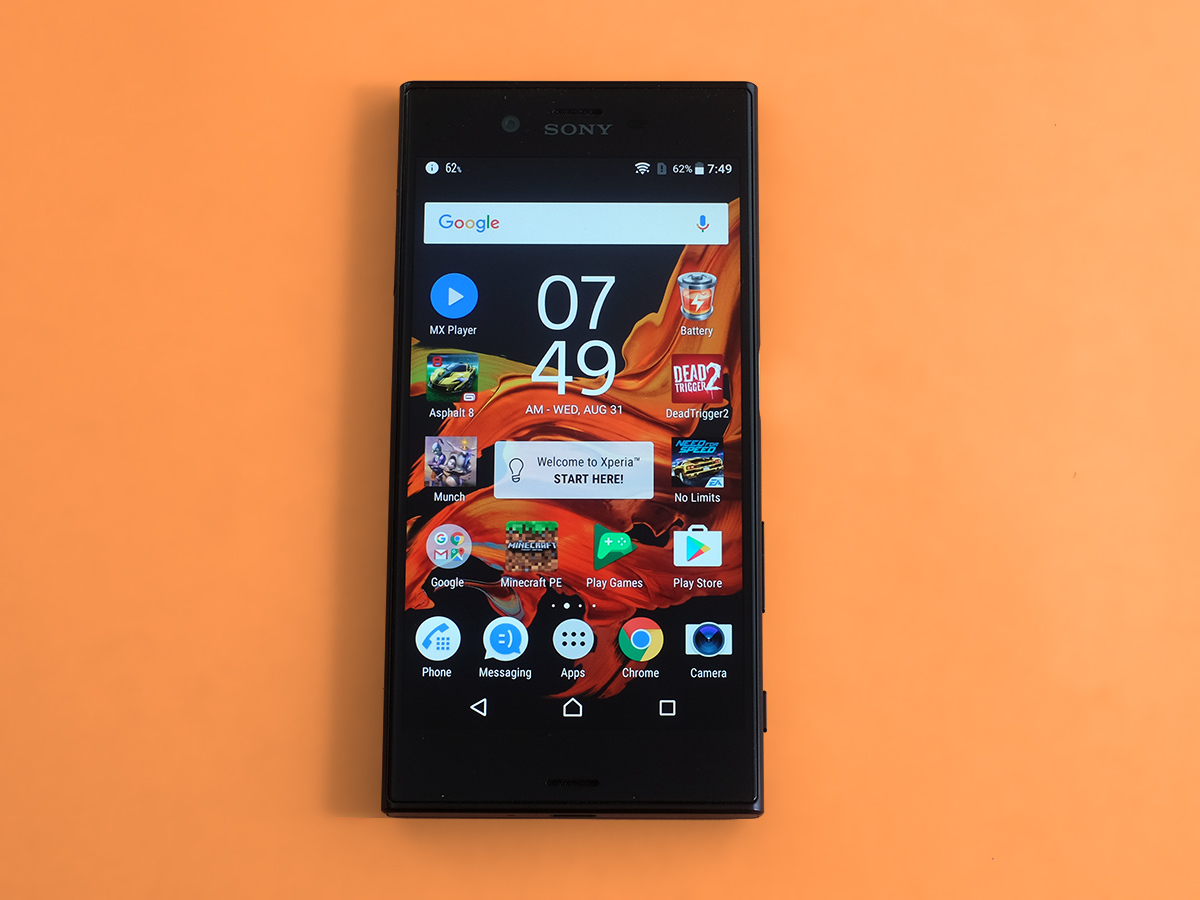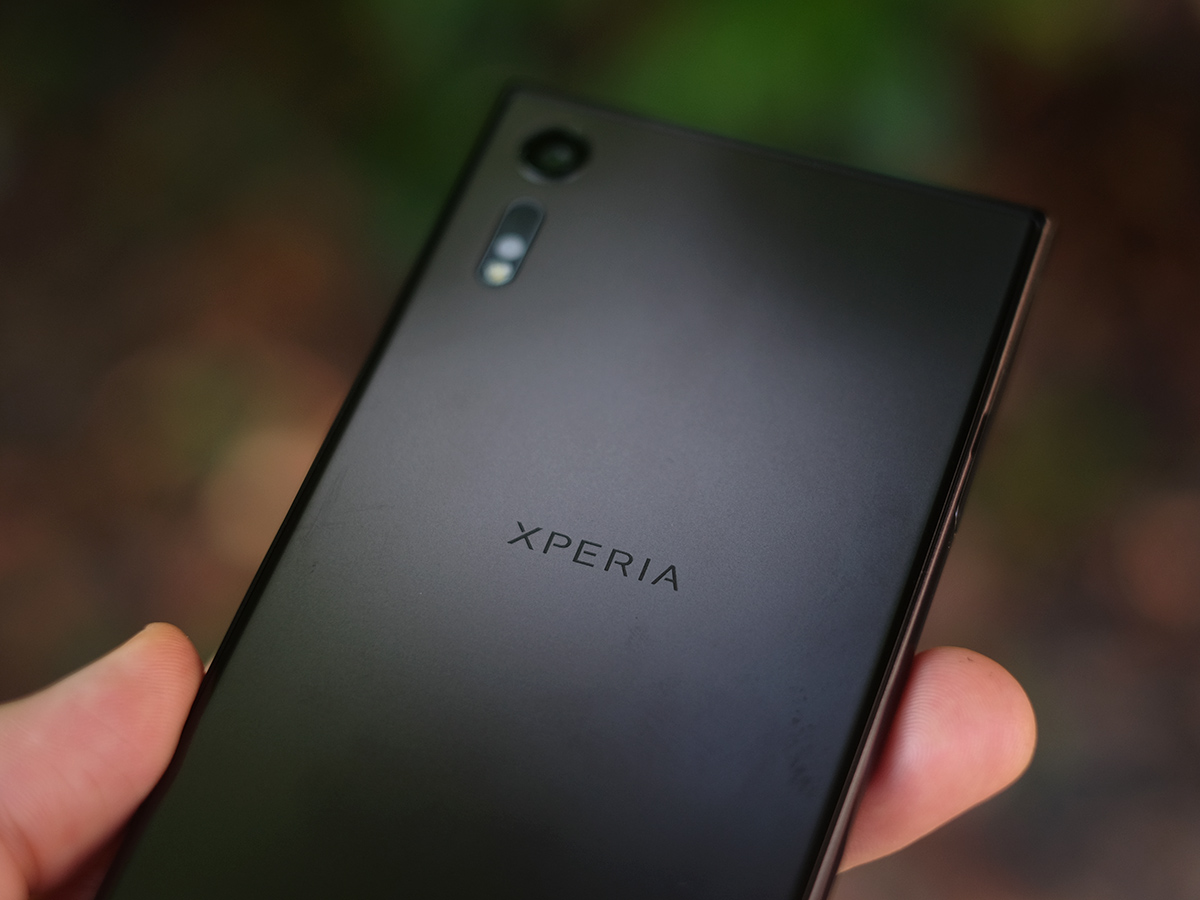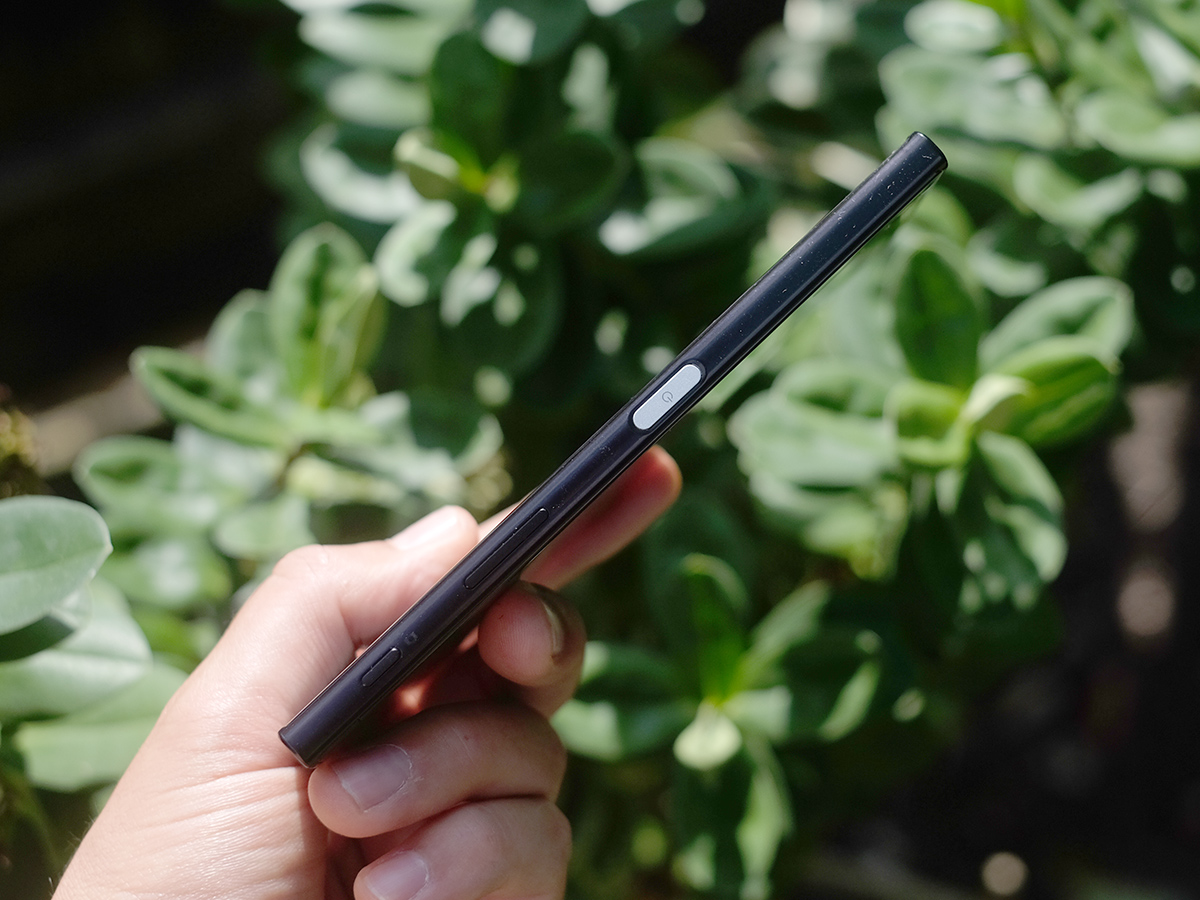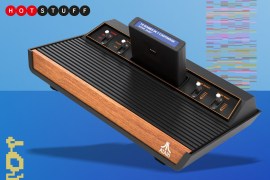Sony Xperia XZ review
Zed’s not dead, baby
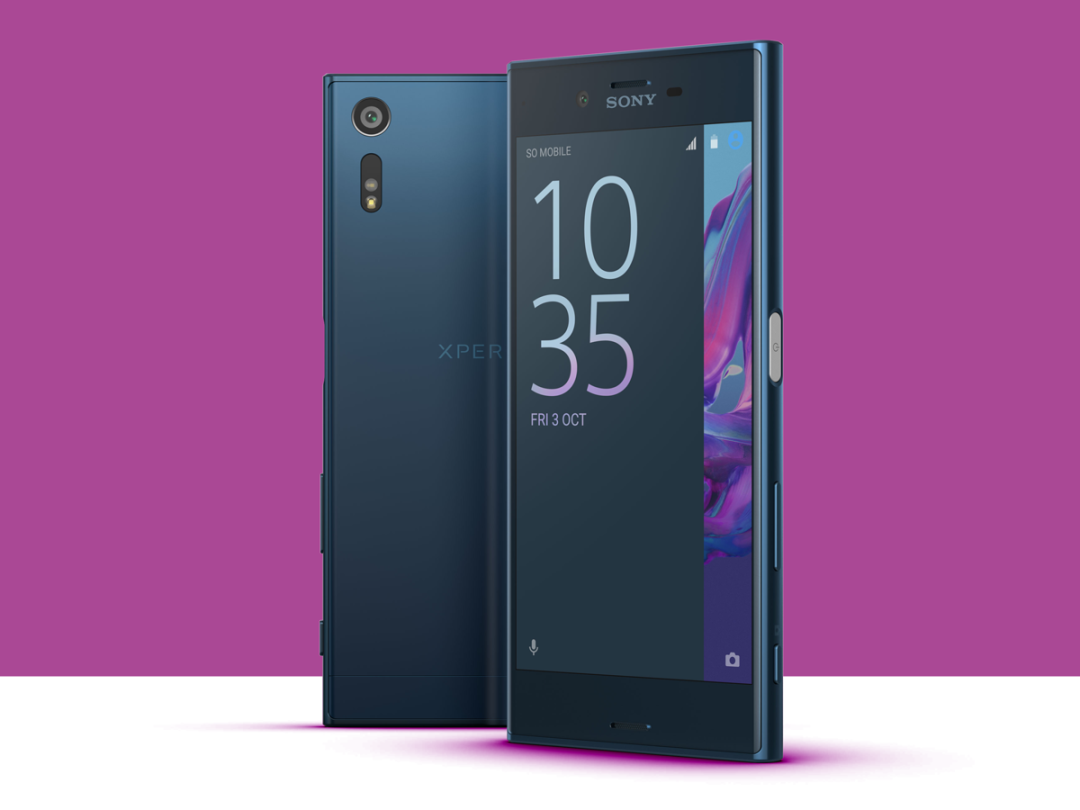
Hate iPhones? Think Samsungs are overrated? We can’t say we agree with you, but all the same, today we have an alternative for your delectation. Sony may not sell as many mobile phones as it used to, but (despite earlier signs to the contrary) it’s not given up. Meet the Sony Xperia XZ.
This is Sony’s new flagship phone (for at least the next six months), and the first signs are positive. It’s not massive, it doesn’t have a “look at me” 4K screen like the Z5 Premium, and it’s more than a little pretty.
Would we buy it instead of a Samsung Galaxy S7? Perhaps not. But while Sony seems to be treading water a bit, never before has water been trodden in such style.
We’ve been looking at a pre-release version of the XZ, and while we’re told this an essentially final handset, some software elements could change a little before the official launch. We’ll update this review if so.
Got that minor caveat? Good. Let’s begin.
Sony Xperia XZ and X Compact – first look
Sony Xperia XZ design: The Theory of Evolution
The Sony Xperia XZ is a case of phone evolution. But looking back at the Xperia series isn’t like seeing a single celled organism sprout legs, turn into a human and sign up for a mortgage. It’s more like a hairy human turning into a slightly less hairy human.
This phone solves a few niggles of old Xperias, such as the boxy, sharp edges, catalogues of flaps and deceptively oversized dimensions. The Xperia XZ is simple but not plain. It’s minimal in the way the prettiest Sony gear is.
The Xperia XZ’s back and sides are metal, the front toughened glass. Sony has experimented with glass backs and plastic bungs in the corners in the past, but it has a new obsession. This year’s highlight is how the edges curve around: curved screen glass edges, curved metal sides and a little curve to the extremes of the backplate.
The mission is to make three different parts feel like a single sweep of glassy-metally loveliness. It works. Sure, you can feel the seams if you try, but it’s the comfort that matters, and the Xperia XZ is more comfortable to hold than all previous Xperia flagships.
The XZ’s little brother › Hands-on with the Sony Xperia X Compact
Sony Xperia XZ hardware: Omni-what-what?
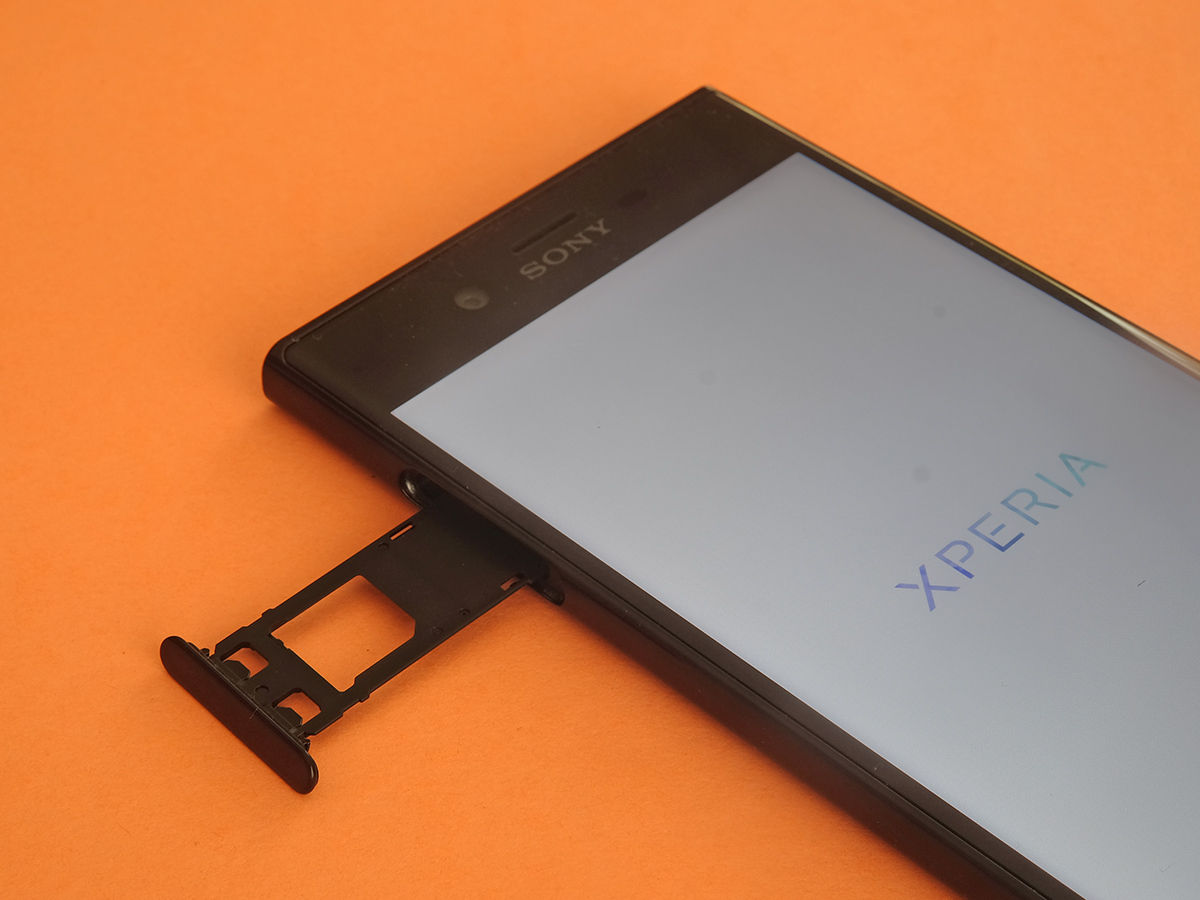
Of course, look at it from 30cm away or further and it appears a lot like the Xperia Z5. It’s a tall-looking phone with a power button that’s unnecessarily eye-catching just because the Xperia series can’t shake off the final Omnibalance strands from its DNA helix.
Omnibalance was the nonsense word the Xperia series used to sit on. It basically meant the power button was in the middle of the phone’s side. Sensibly favouring ergonomics over marketing memos, the Xperia XZ’s button has shifted up a bit.
The look still reeks of Omnibalance, though.
On the other side of the phone is a pull-out tray that holds the SD and nano SIM cards. Yep, Sony still pokes Apple in the eye with expandable storage. There’s 32GB of inbuilt storage too, and that may be enough for some people anyway.
Sony Xperia XZ waterproofing
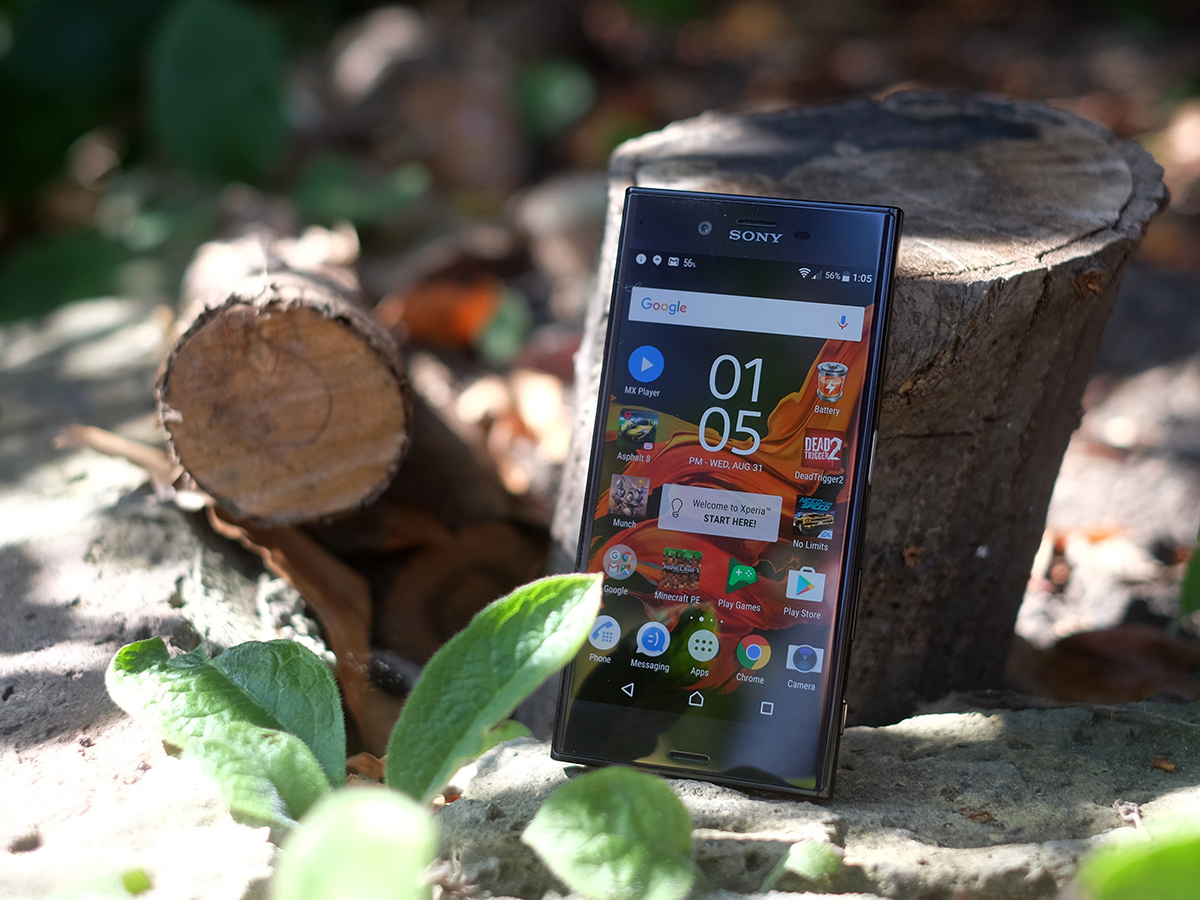
The Sony Xperia XZ also has next-generation water resistance, but don’t get over-excited. Next-gen means it’s waterproof, but you can’t claim a refund if you kill it with water. The rubber seal on the SIM tray shows you get decent water resistance, but Sony no longer welcomes actually dunking the phone in water.
Its finger scanner is very familiar too. Like other Xperias, it sits under the power button. That’s why the button is so large.
The idea is it’ll feel much like pressing the power button of a normal phone but provides security to boot. You do need to click the button to make it work, unlike the Huawei P9’s scanner. But it is very fast. So fast you wonder for a split-second how it has time to scan your thumb at all. That’s the way the best tech should feel – like magic.
Sony Xperia XZ screen: too colourful for its own good?
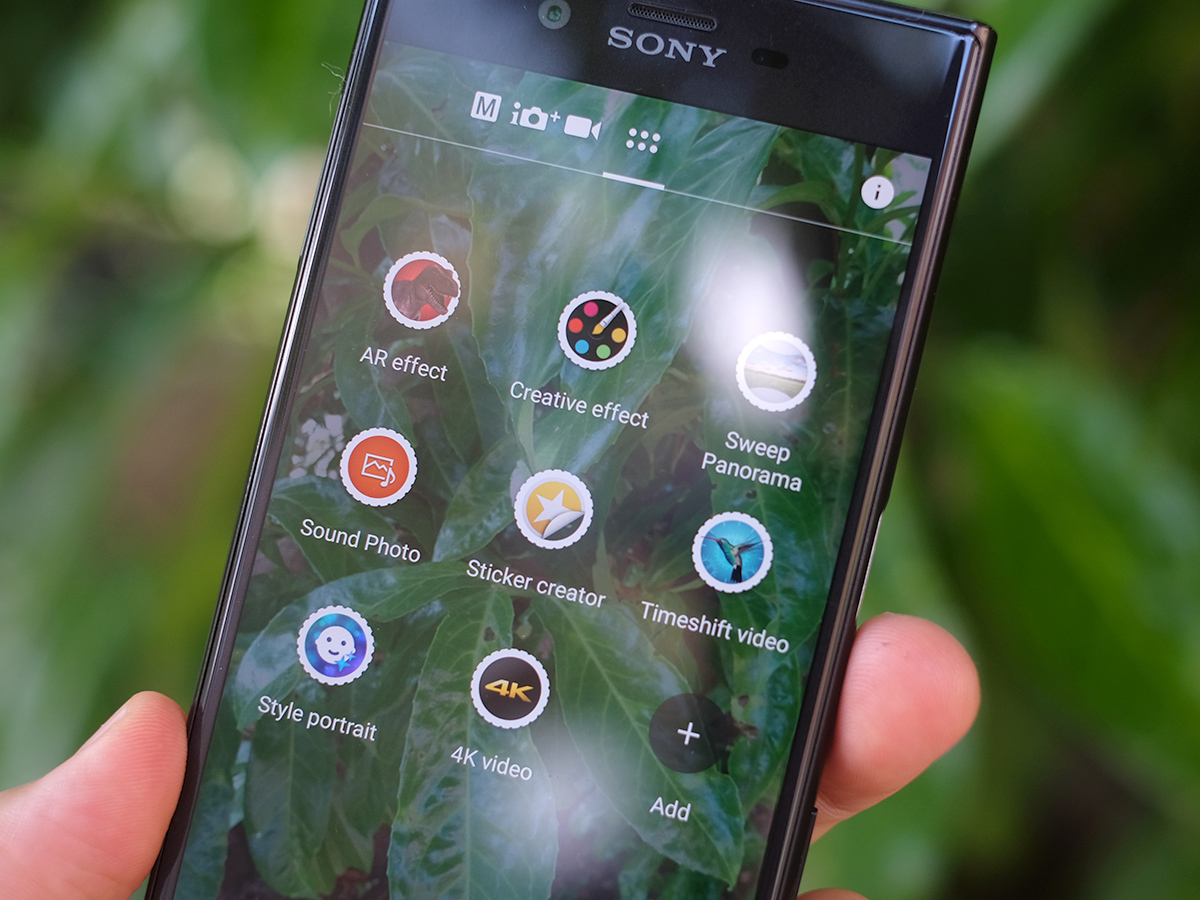
Quite a lot of the Sony Xperia XZ seems familiar, similar to what we saw last year. At first glance at least, the screen seems a lot like the Xperia Z5’s too.
It’s 5.2in across, Full HD resolution rather than something higher and uses an IPS LCD screen. It’s big enough and sharp enough, but the specs don’t fling any superlatives.
The Sony Xperia XZ does try to max-out on colour, though. It’s supremely saturated, the sort of intensity you’d normally see in an OLED screen. The practical issue is that photos appear more vivid on-screen than they do when you transfer them to your laptop, which is not ideal.
Ask yourself: do you want “fire at the Crayola factory” colours, or something a bit more reserved and natural? There are X-Reality and super-vivid image enhancement modes that fiddle with the contrast a bit here, but nothing to calm down the colour.
We honestly didn’t notice much of a difference between the modes either, but this may change with a software update.
The Samsung Galaxy S7 has the edge on screen quality. It can deliver supercharged colours if you want them, but also has a strict sRGB mode for the puritan crowd.
What the Sony Xperia XZ screen nails is brightness and outdoor visibility. It goes bright enough to shrug off any sunny day, with much better outdoor visibility than the LG G5. This is particularly handy if you like to play mobile games while out and about. Pokemon Go, anyone?
The benchmark › Samsung Galaxy S7 review
Sony Xperia XZ speakers: not in the game

Once again Sony has failed to improve its inbuilt speakers for the gamer crowd, though. The basics are spot on: one driver above the screen, one below it for a stereo effect when you hold the Xperia XZ on its side in front of your mug.
However, sound quality and top volume just aren’t particularly good. The HTC 10, iPhone 6s and Samsung Galaxy S7 all sound more powerful. Get your ear right up to the drivers and you can hear it’s only the top one that produces anything but tinny audio, which isn’t going to help.
Maybe Sony mobile should have a word with Sony’s speaker division.
Sony Xperia XZ power: Snap the Magic Dragon
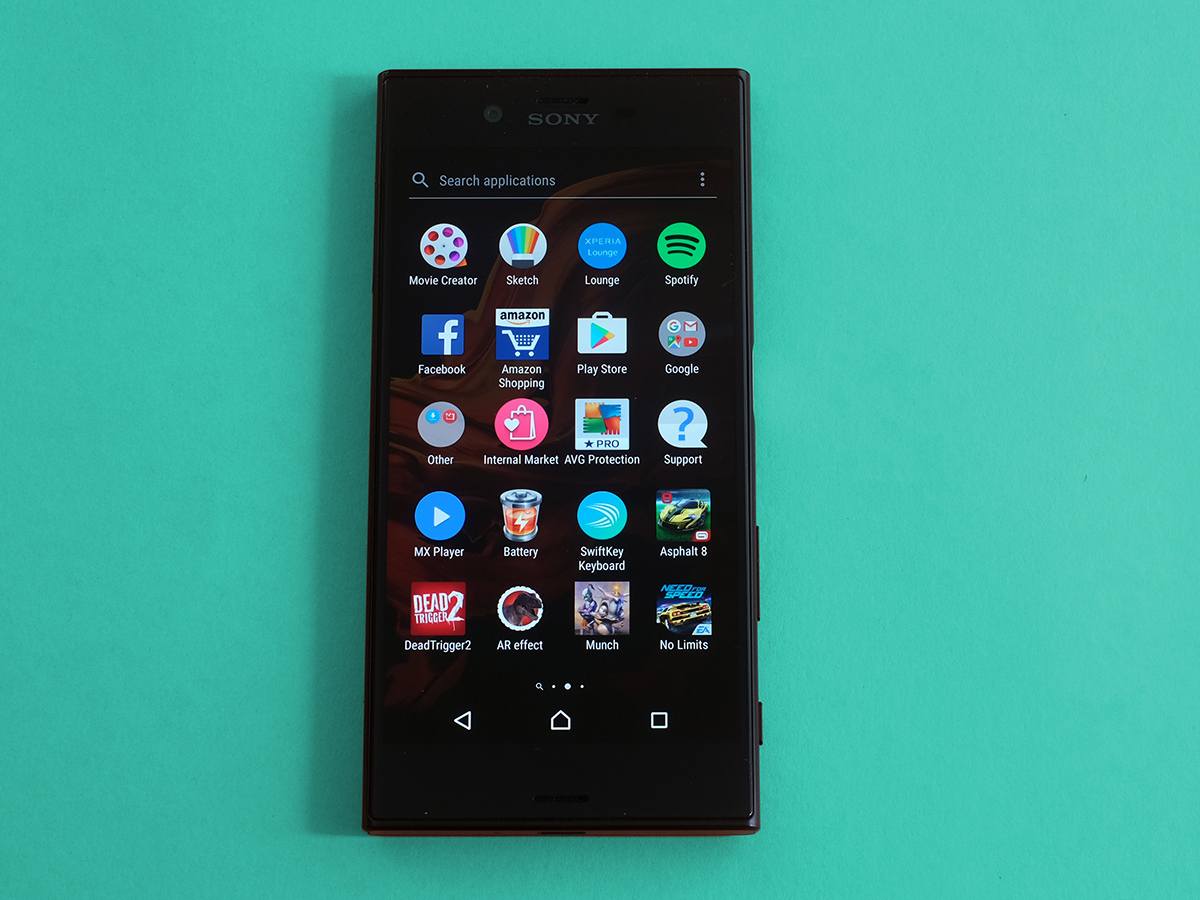
The Sony Xperia XZ has easily enough power to play anything, however. It uses the Snapdragon 820 CPU, part of the Qualcomm renaissance, following a couple of years of producing intermittently suspect chipsets that got warm enough to toast marshmallows.
The most exciting thing about it actually sounds like a downgrade. It’s a quad-core CPU, something you generally only see in phones you’d be slightly embarrassed to use. The Sony Xperia XZ only has four cores (rather than the eight of many rival flagships) because, well, they’re better cores. They’re called Kyro cores, and they are both powerful and efficient.
This is a move to a more Apple-like way of thinking; that it’s better to have a few good CPU cores than 750 naff ones.
Given the Snapdragon 820 is used in phones of much higher resolution, such as the Samsung Galaxy S7, it can power the 1080p Sony Xperia XZ at a canter. How much more efficient it is becomes clear when you play something like Asphalt 8. With an old-gen Xperia Z, you could expect the top of its back to get pretty warm after five minutes or so of play. The XZ stays fairly cool.
We wouldn’t go as far as to call this a totally cool-running phone, though. Charging and using the data connections will make the Xperia XZ get fairly warm. It’s only the CPU/GPU combo that stays much cooler than before.
Sony Xperia XZ operating system: Android 6.0.1 with a sprinkle of Sony style
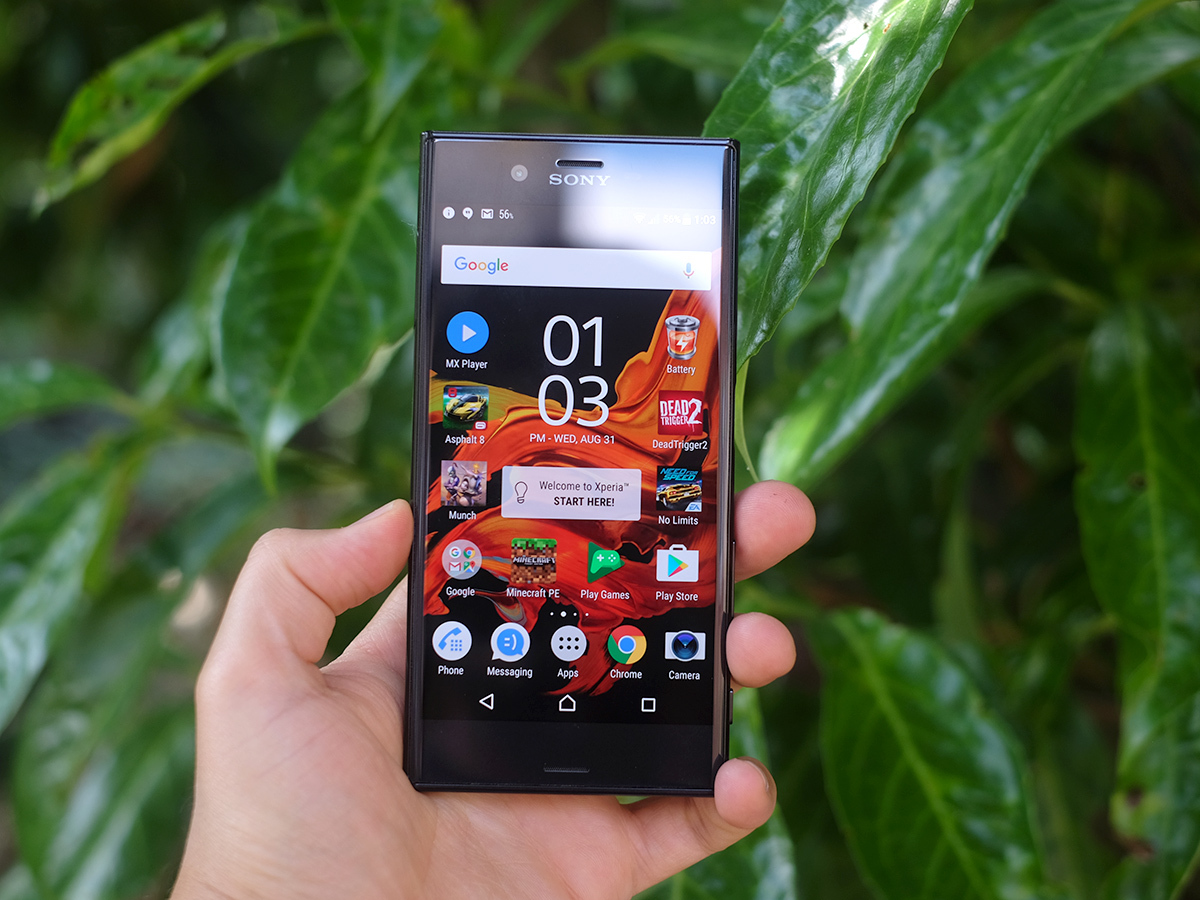
This is a phone of small hardware reforms, like a housemate who finally stops leaving empty toilet rolls on the holder. There’s no major change in the software either.
It runs Android 6.0.1 and the latest version of the Sony UI. The lack of Android 7.0 Nougat is a shame, but we can forgive that given Google’s latest OS was released approximately 45 minutes before the Xperia XZ’s launch.
There seem to be a few little visual tweaks to the Sony interface since we reviewed the Xperia Z5, but it’s roughly equivalent to switching a couple of paragraphs in an essay and convincing yourself it’s a re-write. It’s no issue here, though, as what we had before was perfectly good.
The Sony Xperia XZ software is slick and has its own visual style while being fairly similar to standard Android – except the apps menu comes in pages rather than as a single vertical scroll.
If there’s a hint of magic to Sony’s UI it’s that it comes across as a hint more grown up and sophisticated than Samsung’s or LG’s, even though it’s still a rainbow splurge of colour. Sony also leaves out the extra home screen feature bloat of some rivals, and provides some media apps that are a good replacement for Google’s own.
The video app, for example, lets you play your own videos and acts as a TV guide, and the Music app can even integrate Spotify as well as your own tunes. With Google’s apps now treating your own media files like second class citizens in favour of the all-powerful Google Play media supermarket, they’re welcome extras.
Much like the Sony Xperia Z5, the XZ feels fast too. That’s no surprise. We’d be worried if it didn’t. We’re also pleased to to see that even though we’ve been using a pre-release version of the software, we didn’t encounter any major bugs.
You might also like › everything you need to know about Android 7.0 Nougat
Sony Xperia XZ camera: So Many Megapixel
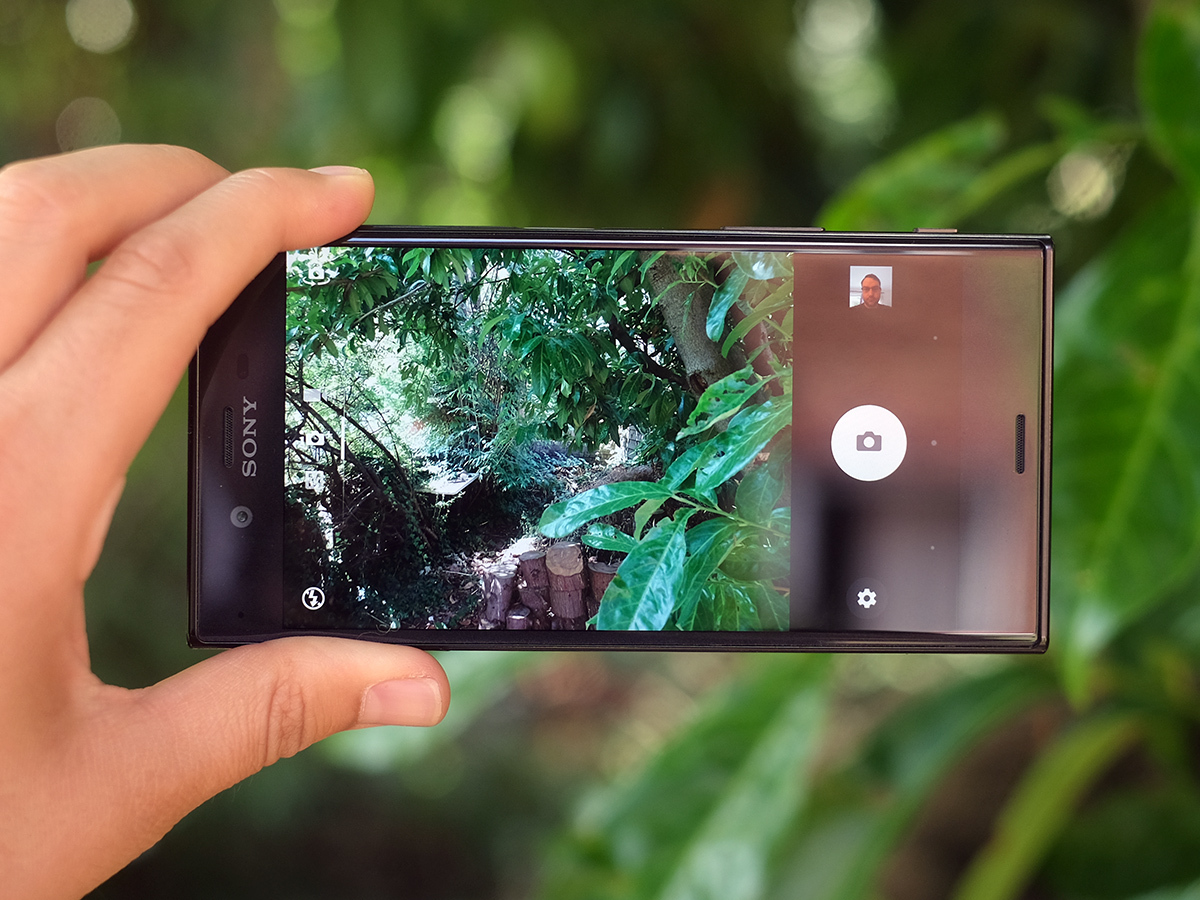
We hope the Xperia XZ will get an Android 7.0 upgrade soon, but we’re otherwise happy with the software status quo. What Sony needed to improve from the Xperia Z-series was the camera.
Unfortunately, it hasn’t. Not quite enough, anyway.
This is a good camera, but we’re still going to pick up the Samsung Galaxy S7 instead if given the choice.
What the XZ camera has is raw spec bragging rights. Its 23MP rear sensor makes this among the highest-res phones in the world. But it’s also a demonstration of why megapixels alone aren’t enough.
Even Sony seems to admit this, because the Xperia XZ actually takes 8MP photos instead of 23MP ones unless you dig into the camera Settings and change this manually. It has been the Xperia way for years.
Other than that 23-megapixel images can take up around 13MB each, the issue is that when you get up close with one of the high-res photos, it descends into ugly fizziness, even with shots taken in bright daylight. The extra resolution doesn’t count for much if looking closer to appreciate it actually makes you wince.
Like previous Xperia Zs, the XZ camera doesn’t have optical image stabilisation either, which is the key to getting good low-light images. At least until dual-sensor cameras such as the iPhone 7’s really show us what’s possible with phone-size tech, anyway. The Huawei P9 had a go, didn’t quite ace the tech.
Low-light photos are unremarkable, and despite having phase detection autofocus, obvious focus seeking causes shutter delay in poorer light. Like other Xperias, the XZ focuses after you press the shutter button so it doesn’t feel like the fastest camera around in normal conditions either.
One of Sony’s other tech brags for the Xperia XZ is that it has a specific sensor on the back that helps out with judging white balance. However, we’ve found that it’s actually quite prone to making indoors shots look very yellow. This will be because virtually all home light bulbs are deliberately warm. It makes your lounge feel more cosy, but it’s what the XZ should compensate for.
All these criticisms need context, though. The Sony Xperia XZ has a good camera. Colour is often fab, making flowers down the local park look ready for the Chelsea Flower Show. It just doesn’t have the chops to keep up with the best.
Worth waiting for? › everything we know about the iPhone 7
Xperia XZ: Sony vs Snapchat
The Sony Xperia XZ camera software is much the same as usual. There are pure auto and more manual modes, as well as a bunch of ‘fun’ modes such as the augmented reality one that made such a splash years ago. That one pastes dinos and other characters onto the world, but feels redundant now we get different silly face-changing filters from Snapchat on an almost-daily basis.
There’s 4K video too, although if you want to use the full breadth of the XZ’s video features, such as HDR and image stabilisation, you have to stick to 1080p or below.
What’s up front is a bit more interesting. The Sony Xperia XZ has a 13-megapixel selfie camera with an f/2 flash. It can render each facial hair in style, although like the rear camera, it all tends to go a bit fizzy when you get really up-close with the resulting photos. It’s way above average, though.
Unusually, the selfie camera uses an autofocus lens rather than one that’s primed to keep your face in-focus at all times. It’s not desperately useful unless you want to start taking selfie cam landscapes but, hey, we all need a hobby.
You might also like › your favourite smartphone camera – revealed
Sony Xperia XZ battery: Up on charges
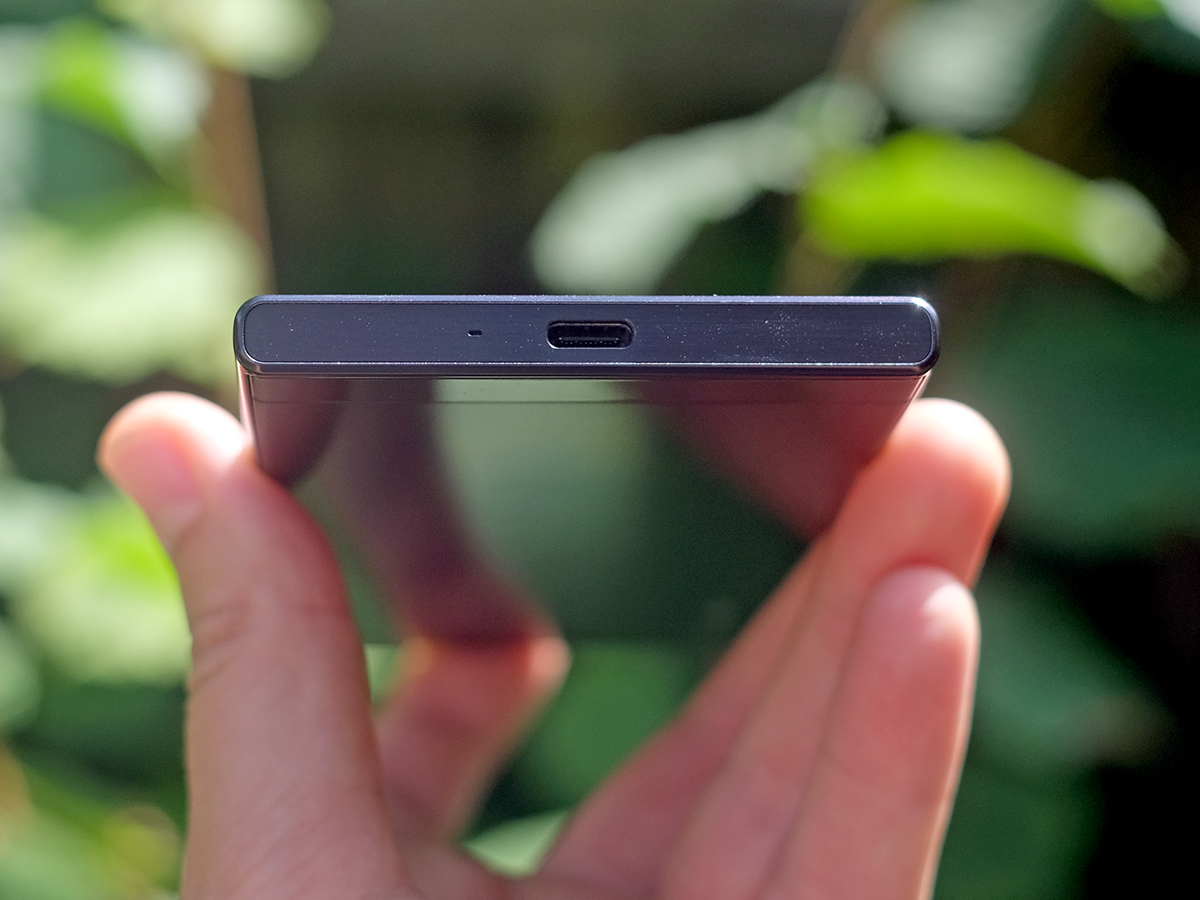
The final big question is about battery life: any good? Feed it a light task and nothing else and the battery lasts for ages. We got the Sony Xperia XZ to hold out for 15 hours of playback of a 720p MP4 video. That’s close to the longest-lasting Samsung phones, and much better than the Xperia Z5 Premium.
However, we’re not quite as impressed when using the phone generally. Even just flicking through the interface causes a lot more battery drain than playing video on a loop.
Battery life is fine, though. You should be able to get a full day’s use between charges, it’s just nothing much more exciting than that.
Interestingly, the battery should degrade less than that of many phones over the course of its life thanks to some rather clever charging tech, called Battery Care. This works by only charging the phone to 90% at first and finishing the job just before you need it. This is supposed to help avoid over-charging the battery and therefore extend its overall life. Because the feature relies upon learning your usage habits we haven’t been able to test it thoroughly during our short time with the phone so far, so we’ll report back on this at a later date.
Ready for one final bit of excitement? The Sony Xperia XZ uses a USB-C port rather than a microUSB one. It can be plugged-in either way around. Mind not blown? You want the moon on a stick, you do.
Sony Xperia XZ Verdict
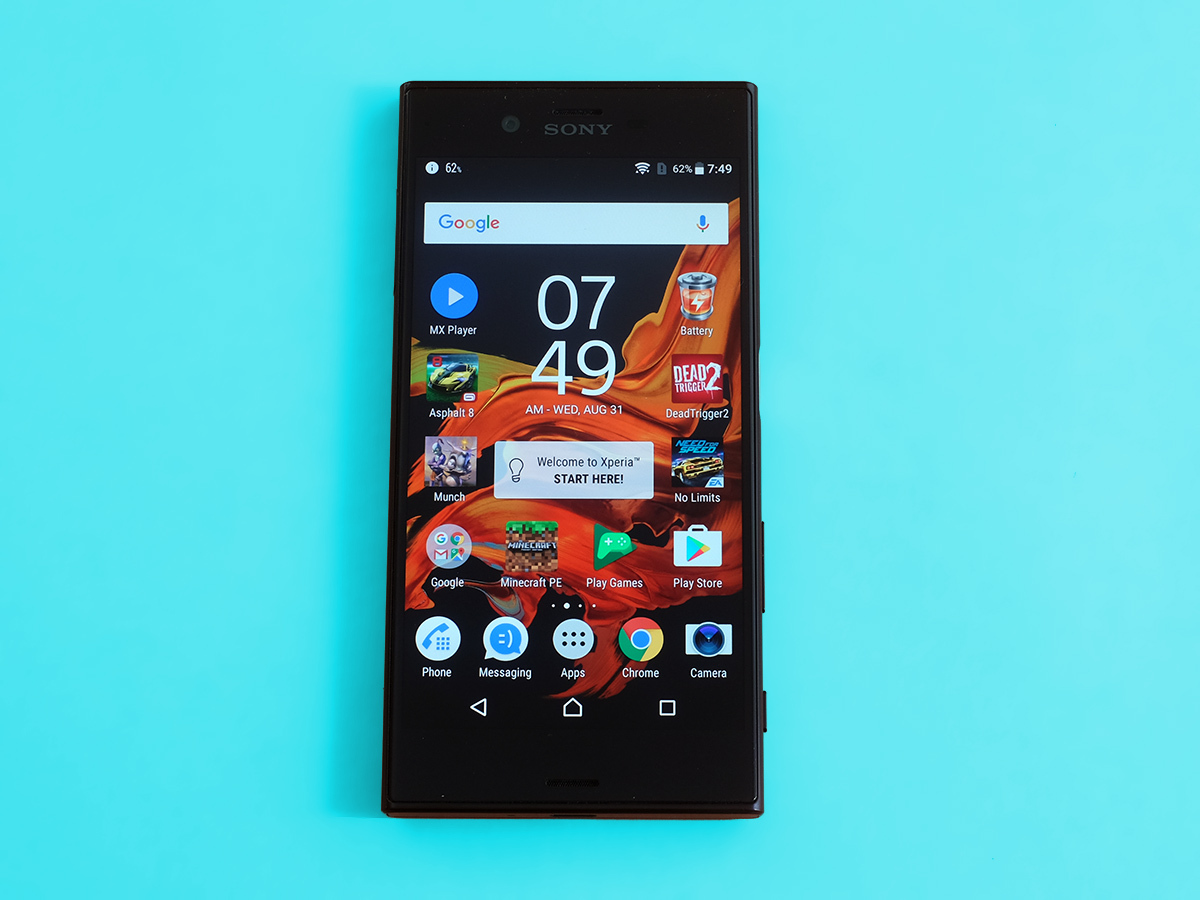
The Sony Xperia XZ once again proves Sony isn’t even really trying that hard to keep up with Samsung anymore. If you’re after the most exciting camera and screen tech around, you need to look to the Korean giants.
However, what you do get here is a good-looking, comfy and fast phone. It’s a decent alternative for those who don’t want a Samsung or an Apple, and we know there are plenty of those people around.
Admittedly, a couple of question marks remain: how much will the software change before launch? And how much will the phone cost?
We understand that the answer to the first question is “not a lot”. We’ll keep an eye out and will update this review accordingly if the changes are more significant than expected. They’d really have to go some to make a difference to the XZ’s score, though.
As for the price, we’re led to believe this is a flagship and will be priced accordingly. In all likelihood it will undercut the likes of the Samsung Galaxy S7, but not by enough to make the decision between which to buy very difficult.
Again, we’ll update this review when final pricing is revealed, but unless it turns out to be way cheaper than expected, we wouldn’t expect to change our verdict – that the Sony Xperia XZ is a very pleasant also-ran in the great flagship smartphone race of 2016.
Stuff Says…
Low on bristling high-tech excitement, but when the also-rans are this good, you know you’re spoilt
Good Stuff
Typical Sony minimalism with better ergonomics
Practically flawless performance
Sony’s UI still pleases (even without Nougat underneath)
Bad Stuff
Screen colours are overblown
Very average speakers
Camera doesn’t live up to the specs
